Learn how to make traditional pandesal with this simple and easy-to-follow recipe. Plus, the secrets to making the best pandesal every time.
(If you prefer your morning bread a little jazzed up, try this soft cheesy ensaymada, ube pandesal or treat yourself to Spanish bread. They’re all delicious!)
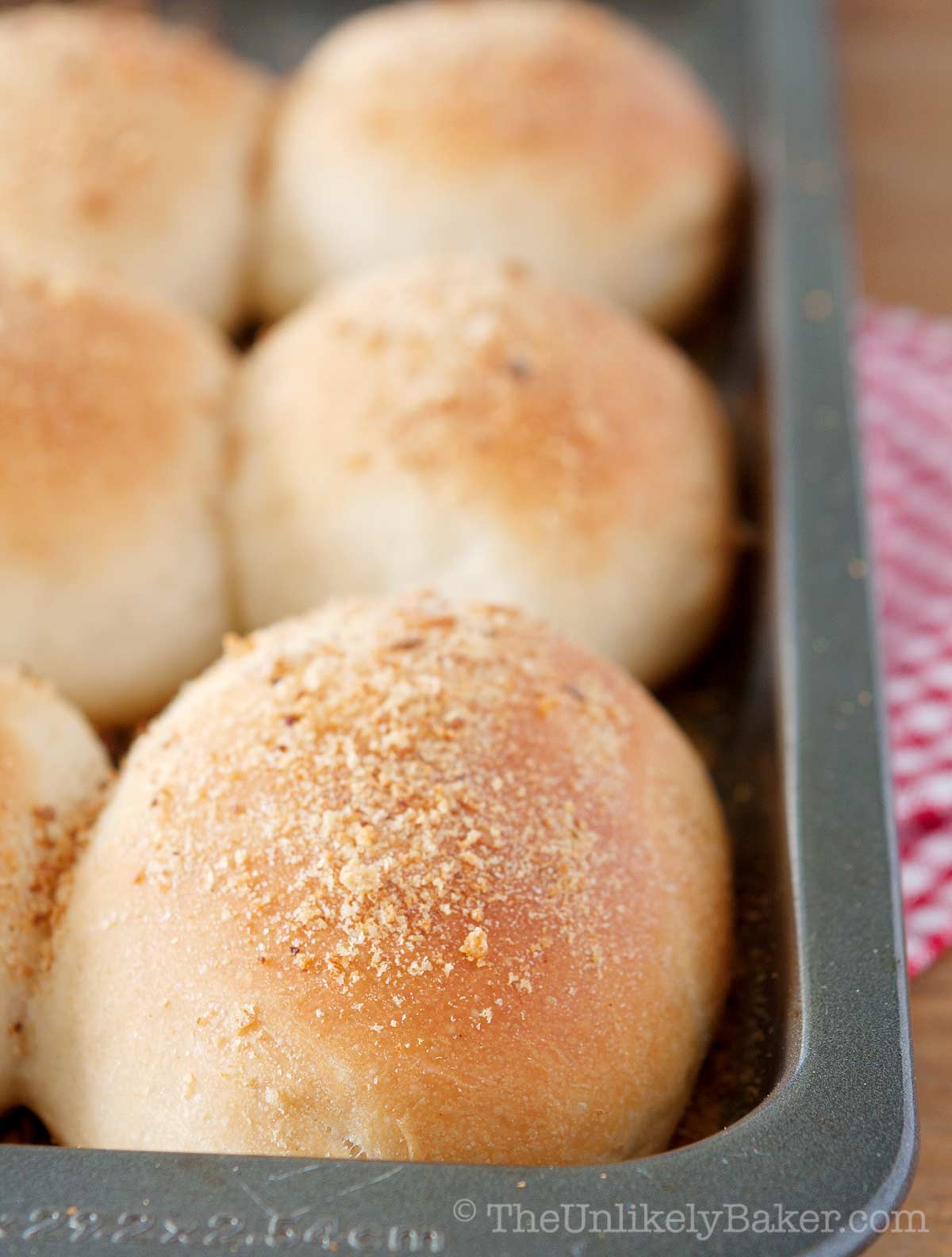
Are you a Filipino living abroad like me? Then you’re probably thinking why bother making pandesal at home when you can get them pretty easily at the Asian supermarket or places like Valerio’s or Goldilocks.
One reason: nothing beats the smell of freshly baked pandesal filling your kitchen.
And it’s not just any smell. It’s THE smell.
One sniff of freshly baked pandesal and I’m back at my nanay’s dining table, eating pandesal filled with Lily’s Peanut Butter or coco jam that she prepared for me after school.
Or it’s a Sunday morning and I’m happily eating pandesal for breakfast (out of those little brown paper bags) that my mom bought from the local panaderia or bakery after church.
Not a Filipino? Then you are in for a treat.
Unlike dinner rolls or the regular loaves of bread we get here, this classic, authentic pandesal recipe is made without eggs, without butter and without milk, has a very subtle hint of sugar and salt, crunchy outside and soft inside.
It’s certainly unique and absolutely delicious. Give it a go and find out why Filipinos all over the world love it.
What is pandesal bread?
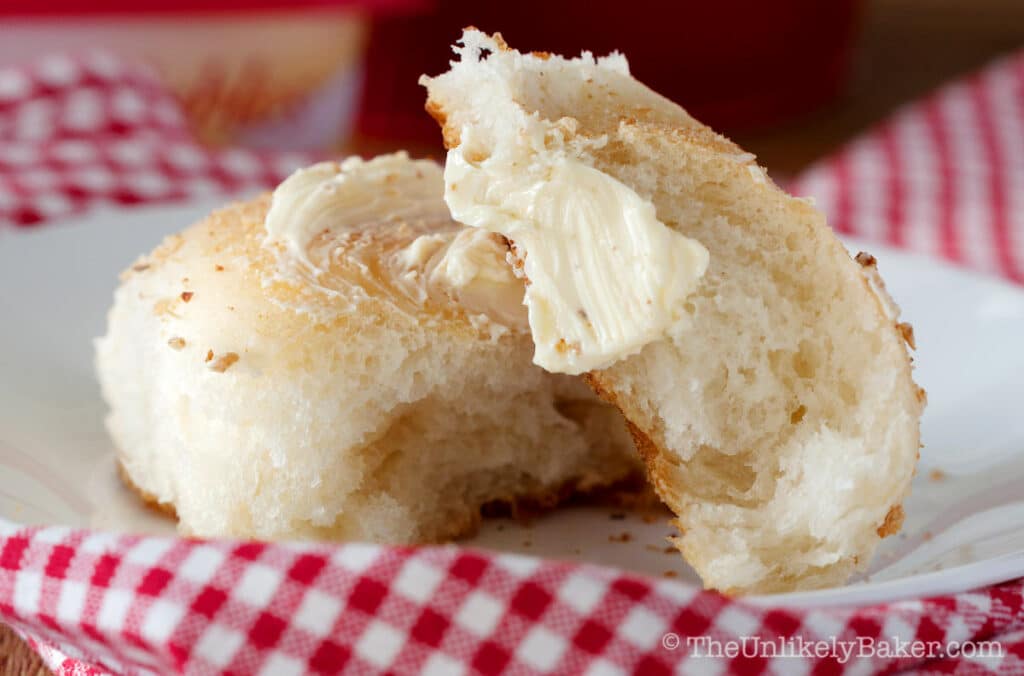
So what is pandesal bread? Wikipedia puts it very simply as “salt bread”.
Ironically, it’s more sweet than salty. And it has a really rich history for such a humble bread. Check this out if you’re so inclined, it’s quite an interesting read.
And there are different variations of pandesal; I dare say it’s as varied as the number of islands in the Philippines (and that’s a lot)!
This recipe is closer to the traditional pandesal I grew up eating as a child in Manila – crusty and crunchy outside, soft and chewy inside, delightfully sweet and salty.
It’s not excessively soft and fluffy like dinner rolls; it’s not overly hard and dense either. It has just the perfect bite to it that’s uniquely pandesal bread.
Easy pandesal recipe for home bakers
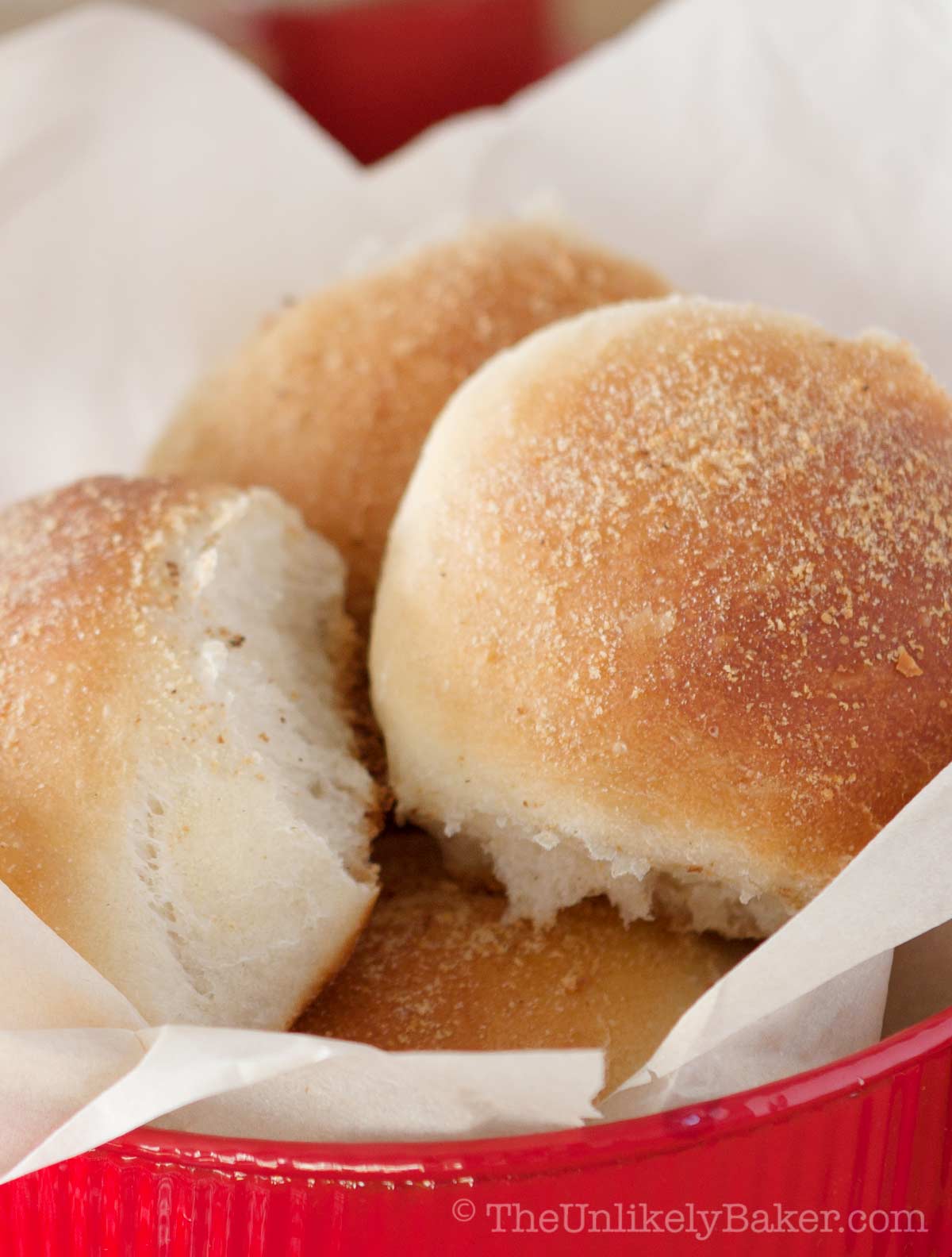
I’ve looked around for pandesal recipes for a long time and this is the result of me tweaking and trying to make it easier. And it is.
I’m a self-taught home baker like you and I like shortcuts as much as the next person so if I can make this beloved Filipino bread at home, you can too.
If you look at the recipe, it’s just a lot of steps but they are easy, baby steps. Manageable steps to make the whole process that much more achievable.
And don’t worry – I’ve been baking pandesal using this recipe for years now and it comes out perfect every time. It’s the best pandesal recipe!
Let’s get to it.
Ingredients
The main ingredients are pantry staples:
- Sugar
- Oil
- Salt
- Flour
Pandesal is yeast-based so you’ll need to buy some. I like using active dry yeast vs. instant yeast (more on that below) and this is the brand I always use.
You might be surprised to see that bread crumbs are involved too. That’s what makes pandesal so unique. I use plain breadcrumbs.
Baking tools
The tools you need are simple as well — just bowls and baking pans. I don’t use a mixer and stir everything by hand.
If you do own a stand mixer with the hook attachment, or a food processor with a dough blade, you can use those.
I just choose to stir and knead the pandesal dough by hand because it gives me greater control and I have less chance of over-kneading it.
I’ve found that the most helpful kitchen gadgets when making pandesal are:
- A silicone pastry mat — makes clean up so easy
- A kitchen scale — the secret to consistently delicious and evenly sized pandesal
- And an instant read thermometer — this ensures your ingredients are at just the right temperature — warm enough but not too hot — every time
How to make (step-by-step photos)
Now that we have our ingredients and tools ready, we can get baking.
Phase 1: proof yeast
In a medium sized bowl, stir warm water, active dry yeast and granulated sugar until dissolved. Set aside and let stand until bubbly (about 10 minutes).
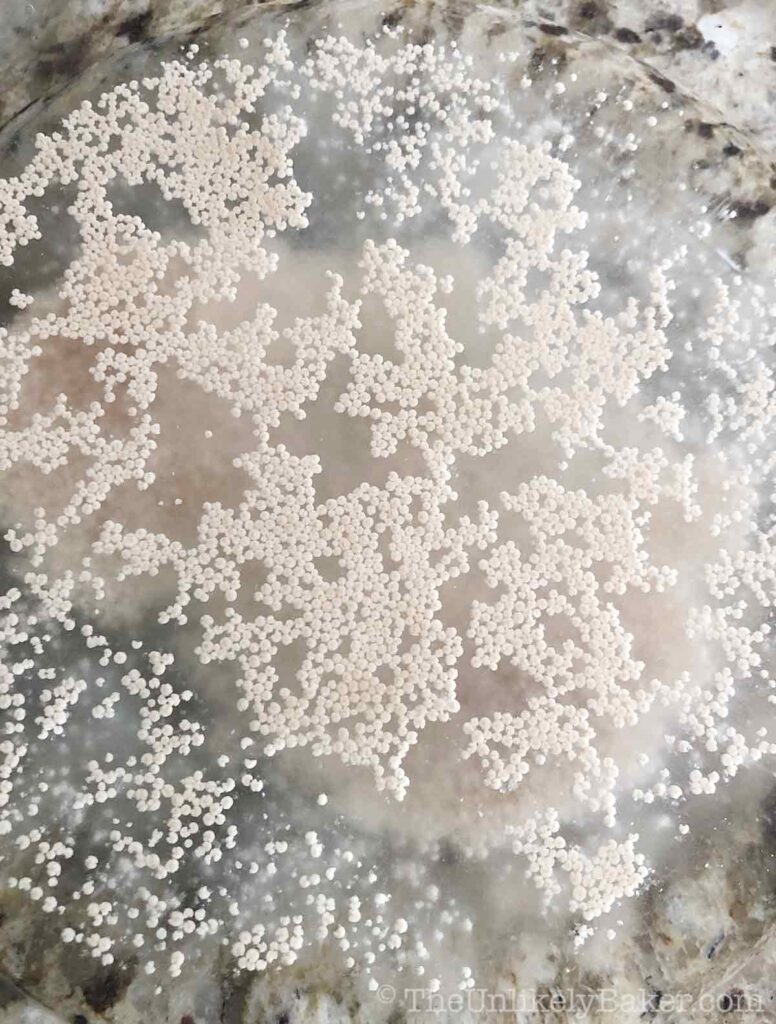
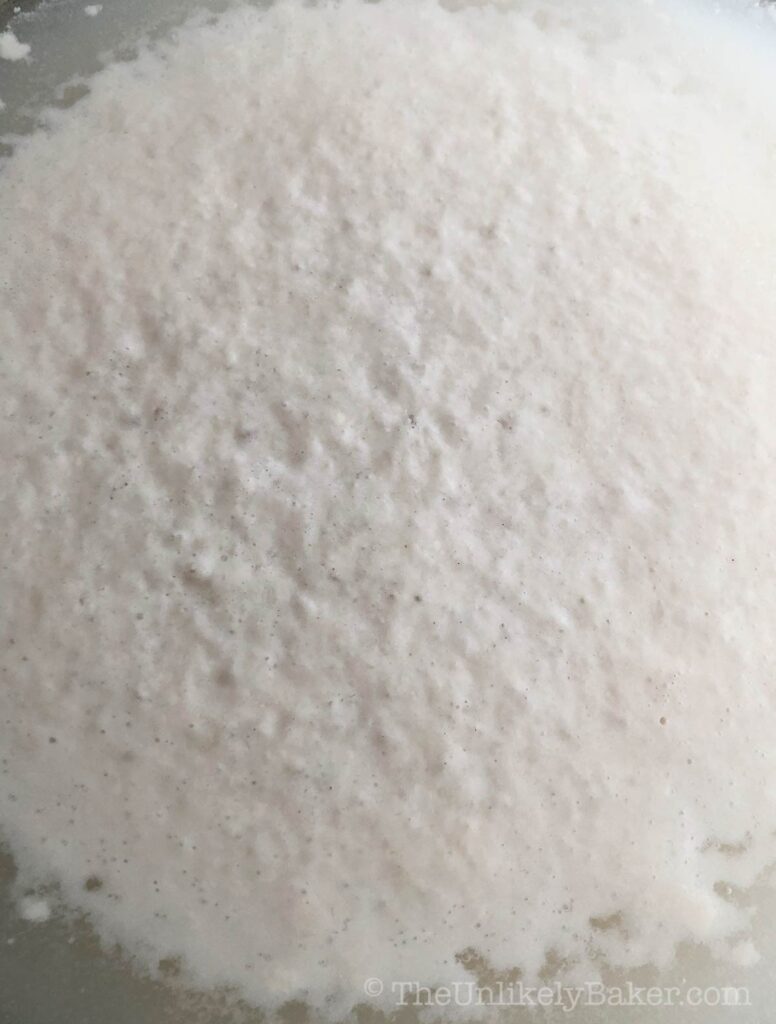
Phase 2: work on dough
In a large bowl, stir sugar and oil until fully combined.
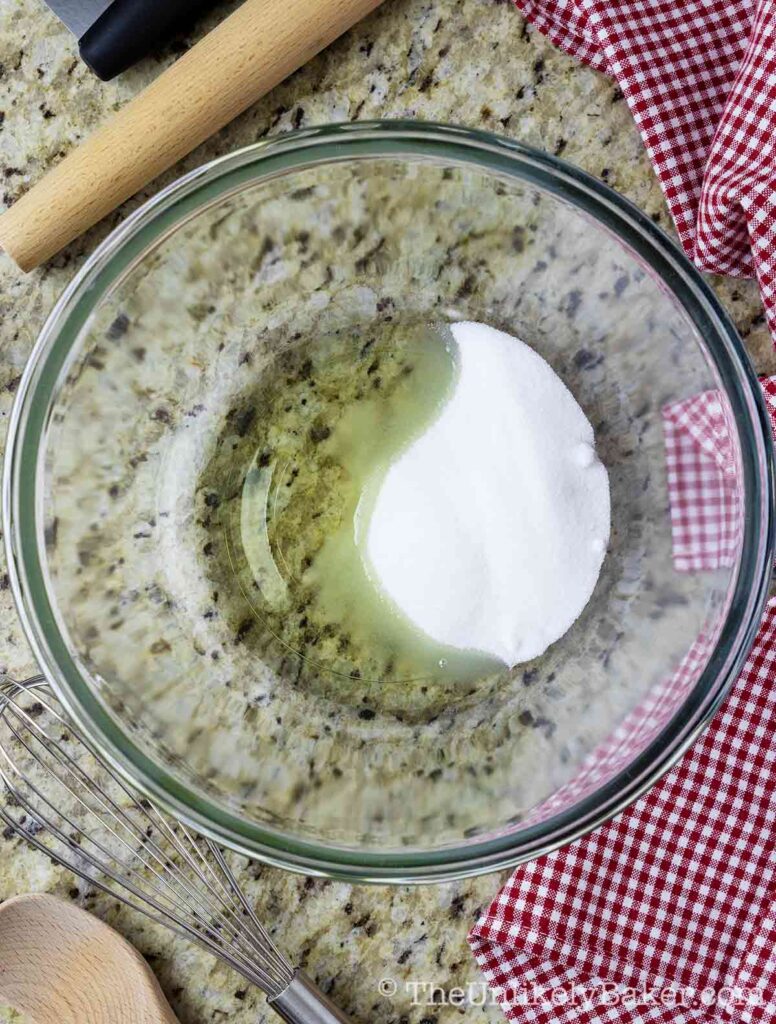
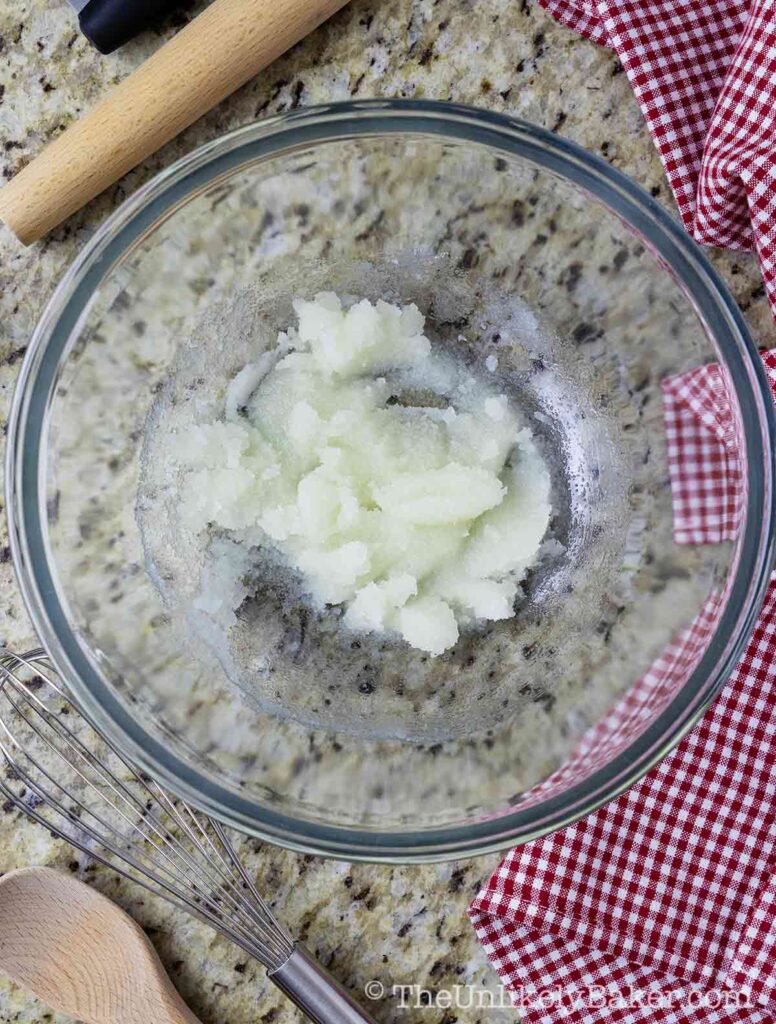
Add salt, your yeast mixture from phase 1, and 1 cup of flour. Stir until incorporated. Proceed to add the rest of your flour ½ cup at a time combining well after each addition.
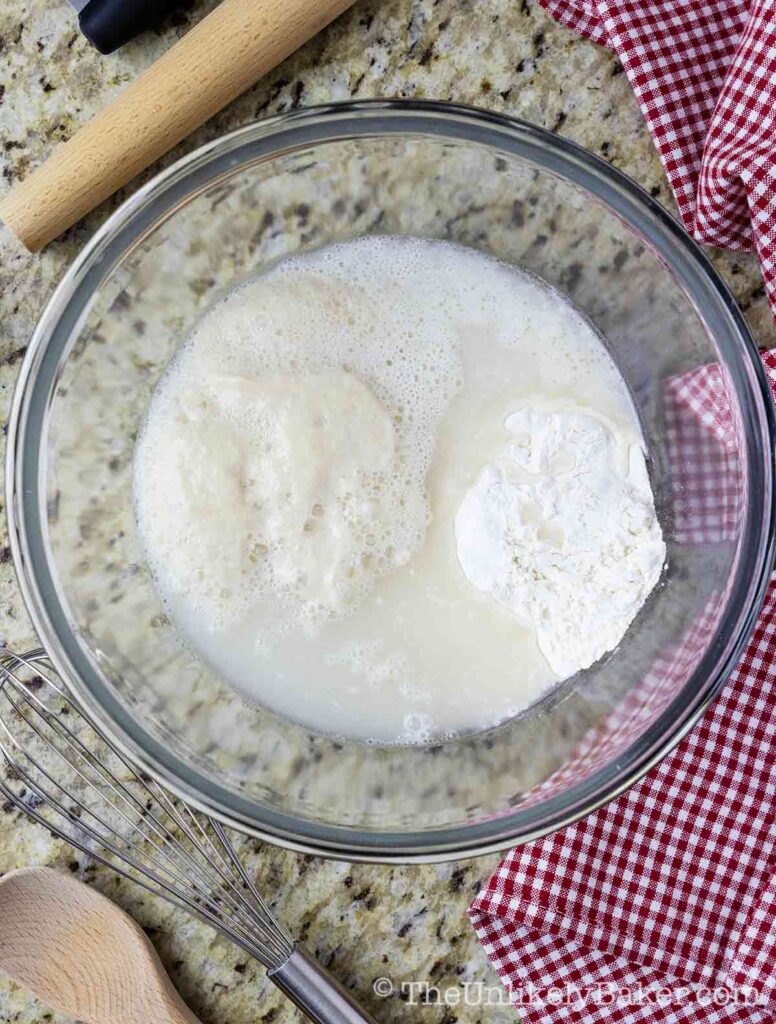
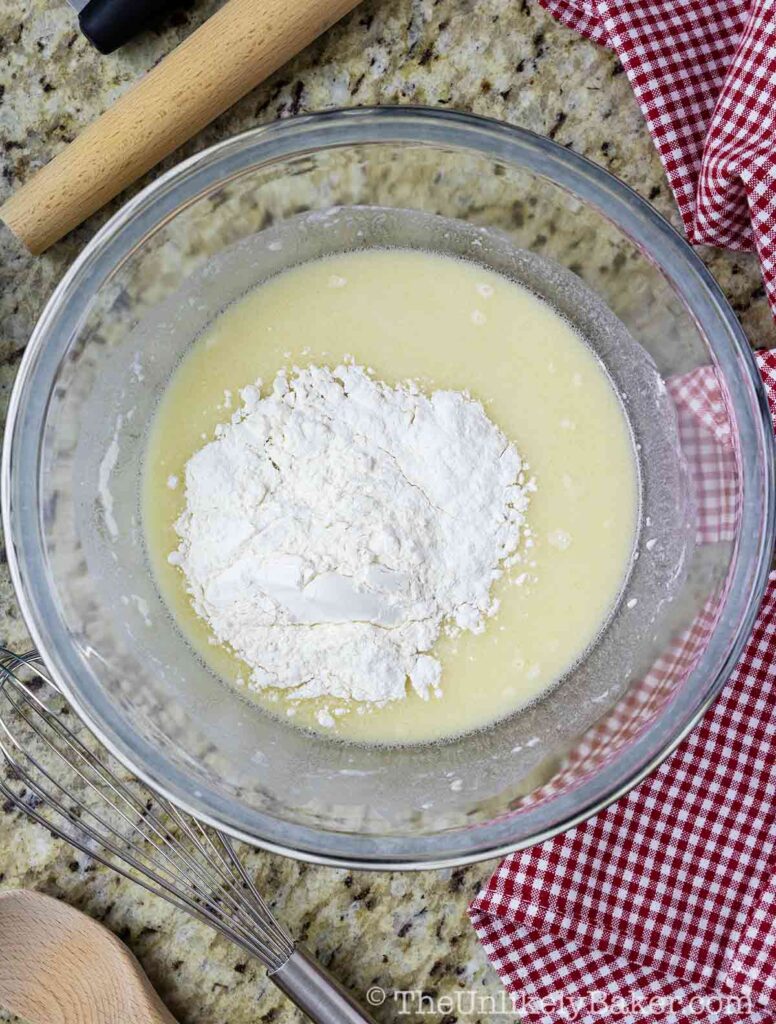
Once the dough starts pulling and sticking together in a ball, transfer it into a lightly floured surface and knead until smooth and elastic (8-10 minutes). When in doubt, knead some more.
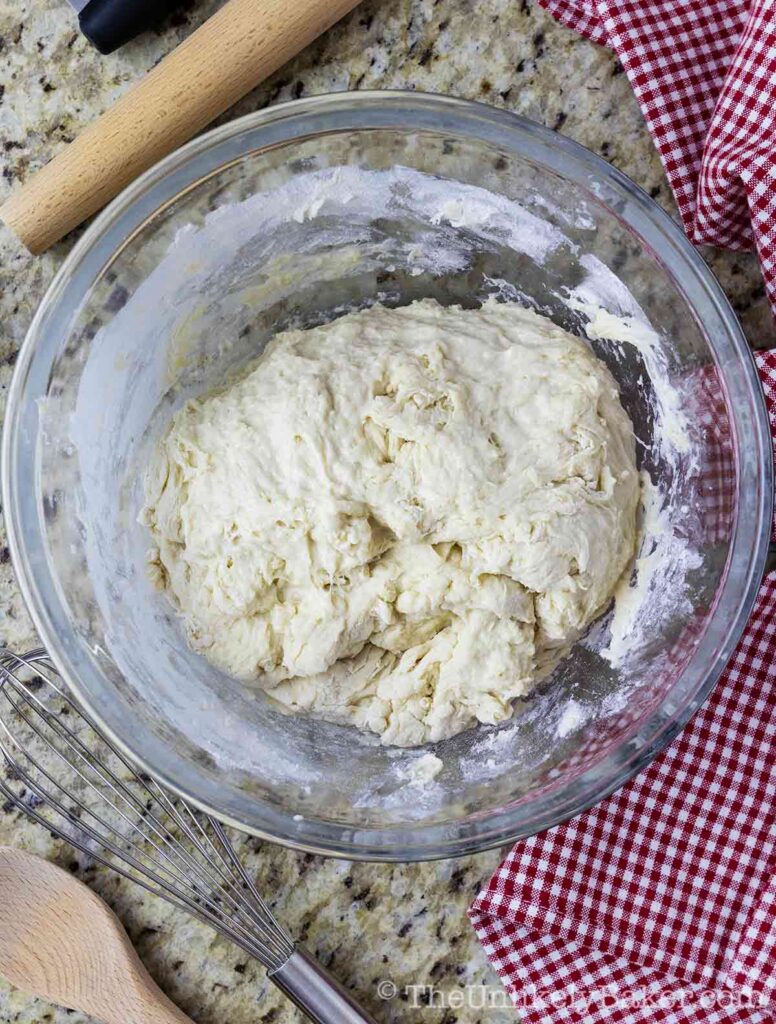
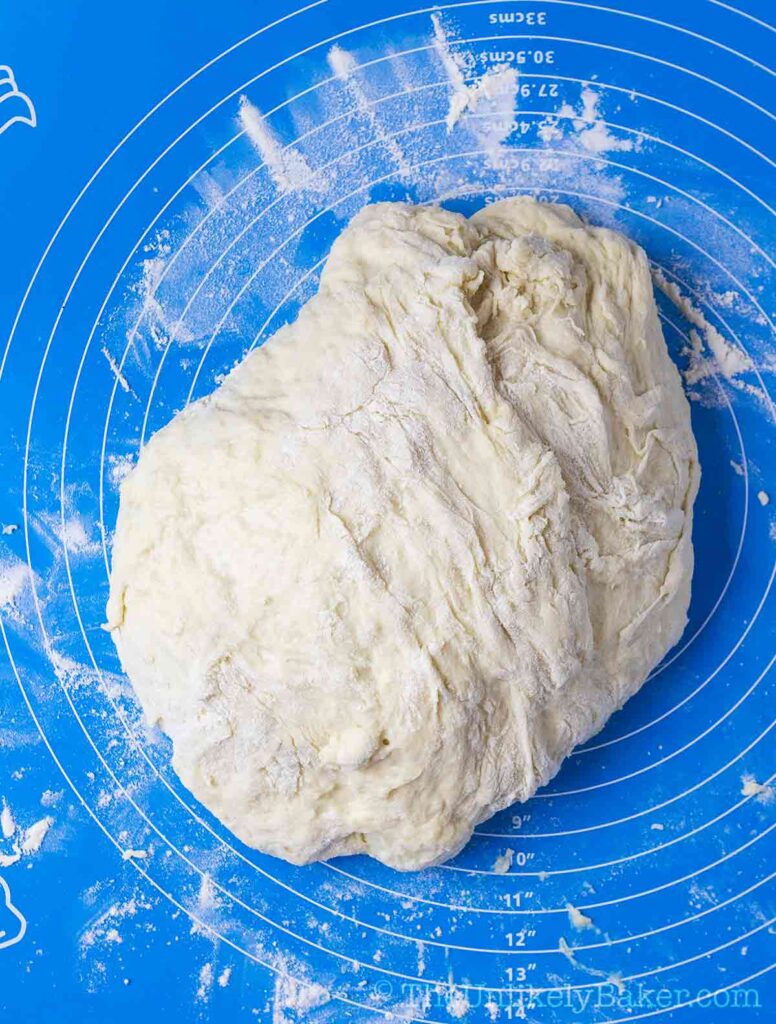
Phase 3: rise and divide
Oil a large bowl with canola or vegetable oil. Place your dough in the bowl and turn to ensure the whole dough is coated.
Cover with a damp cloth or plastic wrap and allow to rise in a dry warm place (about 90F) until it doubles in size (about 2 hours).
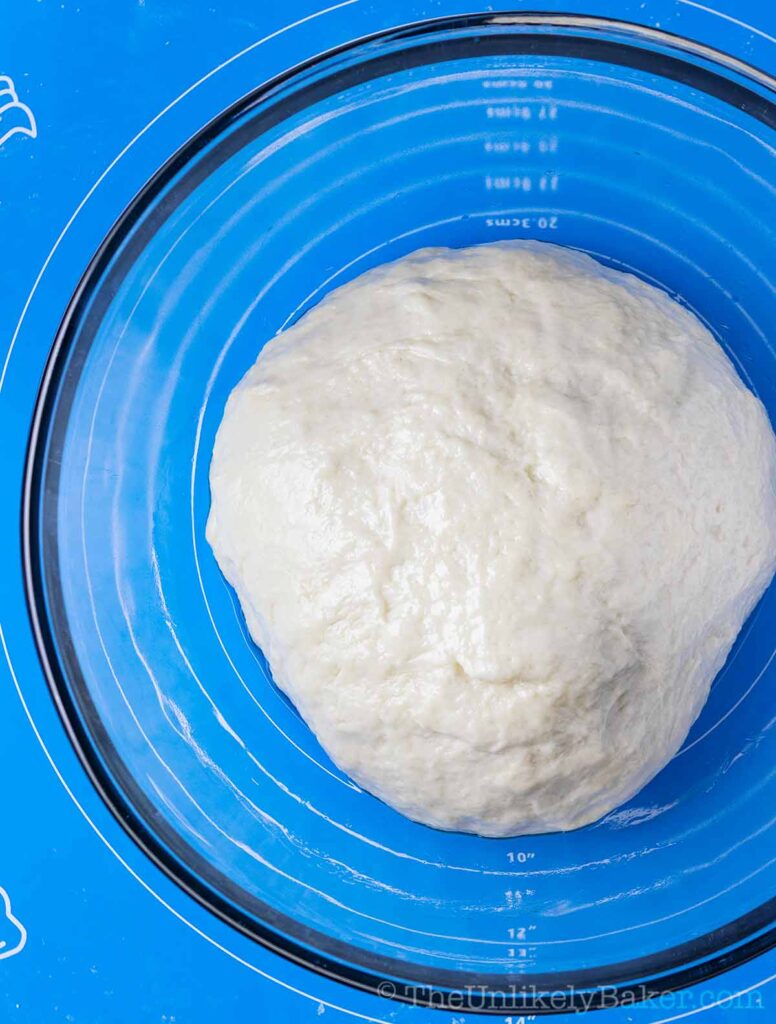

Once the dough is ready, turn the dough into a lightly floured surface and knead slightly. Weigh the dough and divide into 36 pieces.
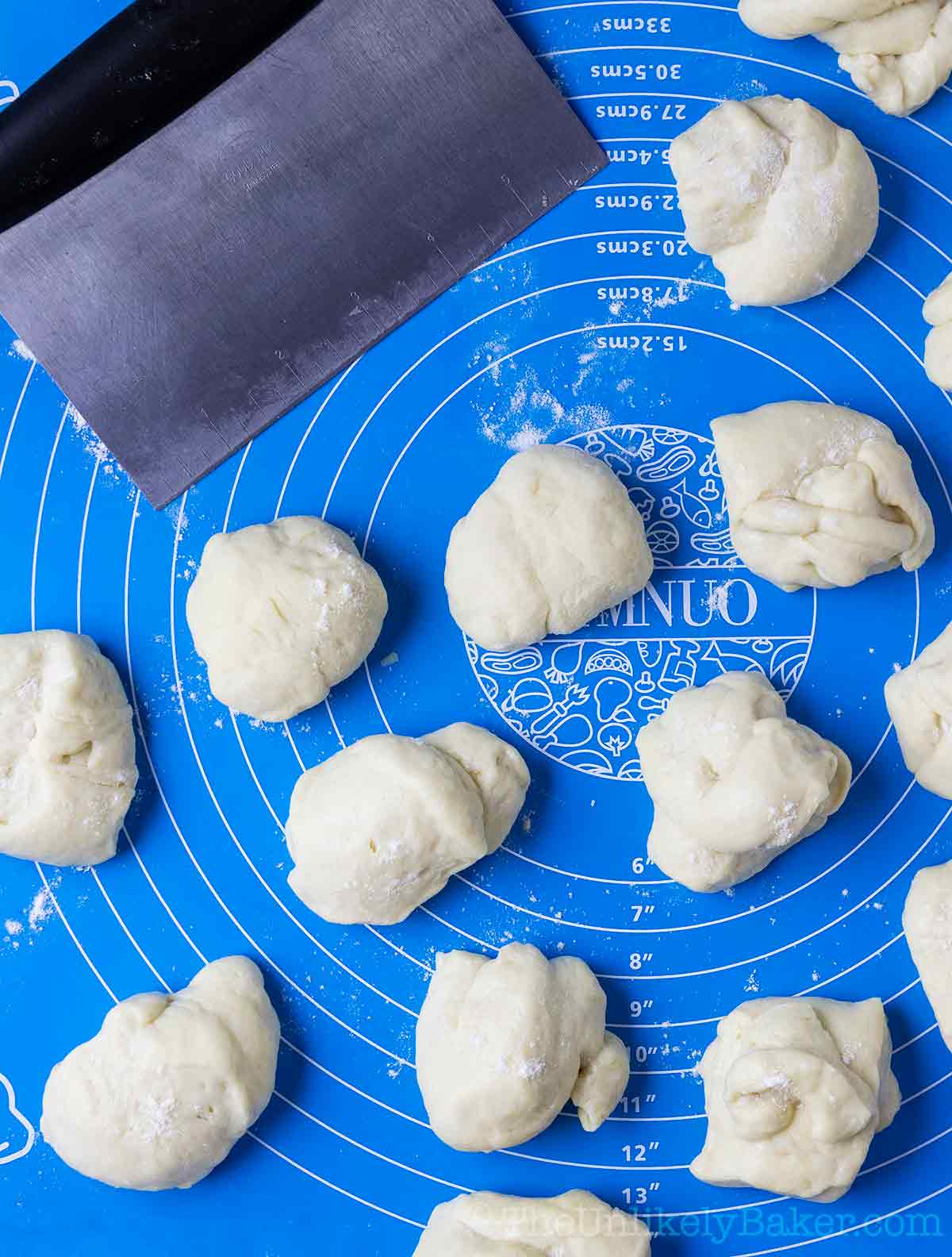
Shape each piece into an oval, like an egg, and place onto a lightly greased 9×13 inch baking pan (you would need two baking pans, 18 pieces of pandesal per pan).
Make sure to keep about a quarter inch space around each piece to allow them to rise further.
Cover each baking pan with a damp cloth and allow to rise a second time (about an hour).
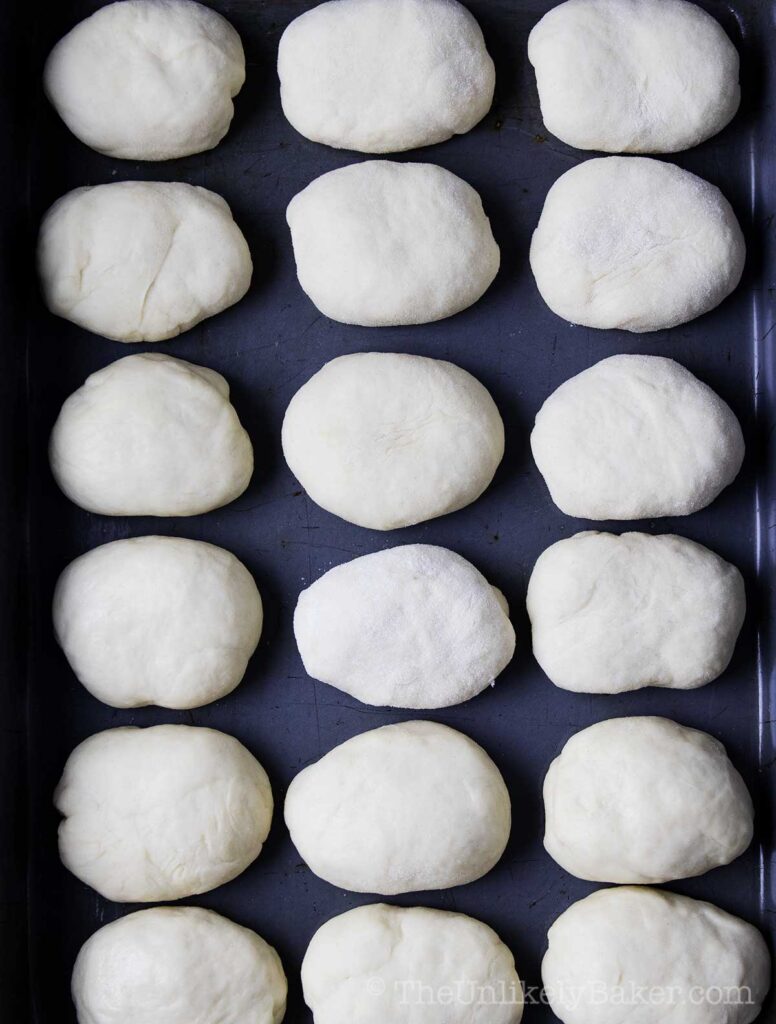
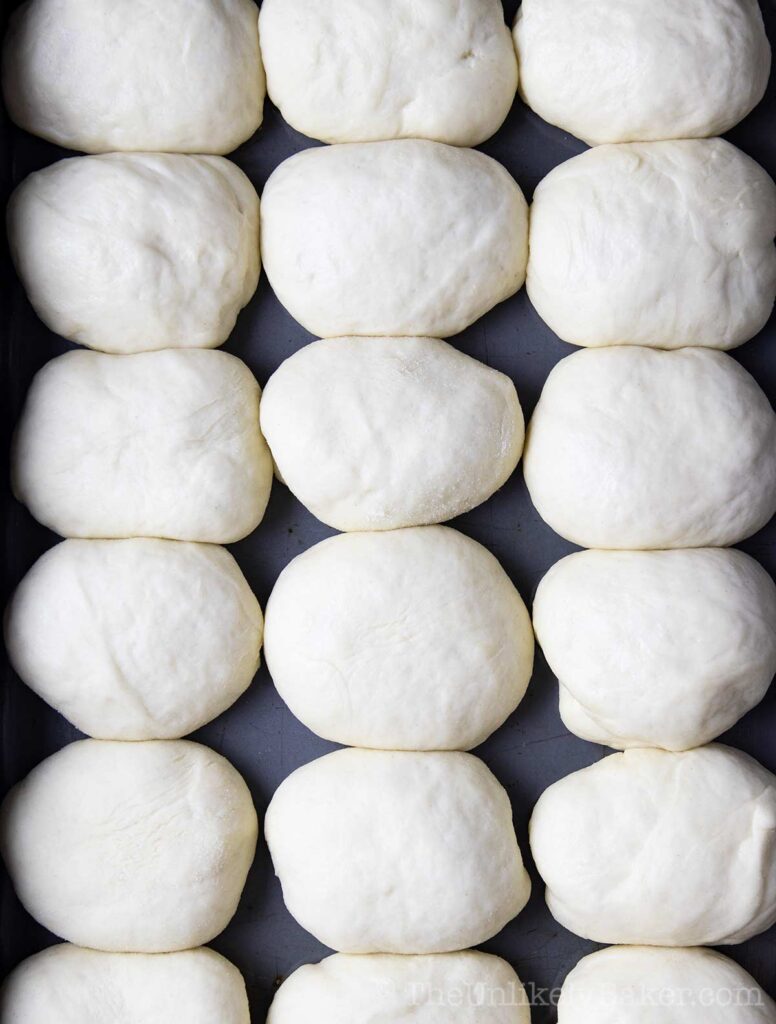
Phase 4: bake
Preheat your oven to 375F.
Sprinkle bread crumbs on top of the pandesal and bake until golden brown (15-20 minutes).
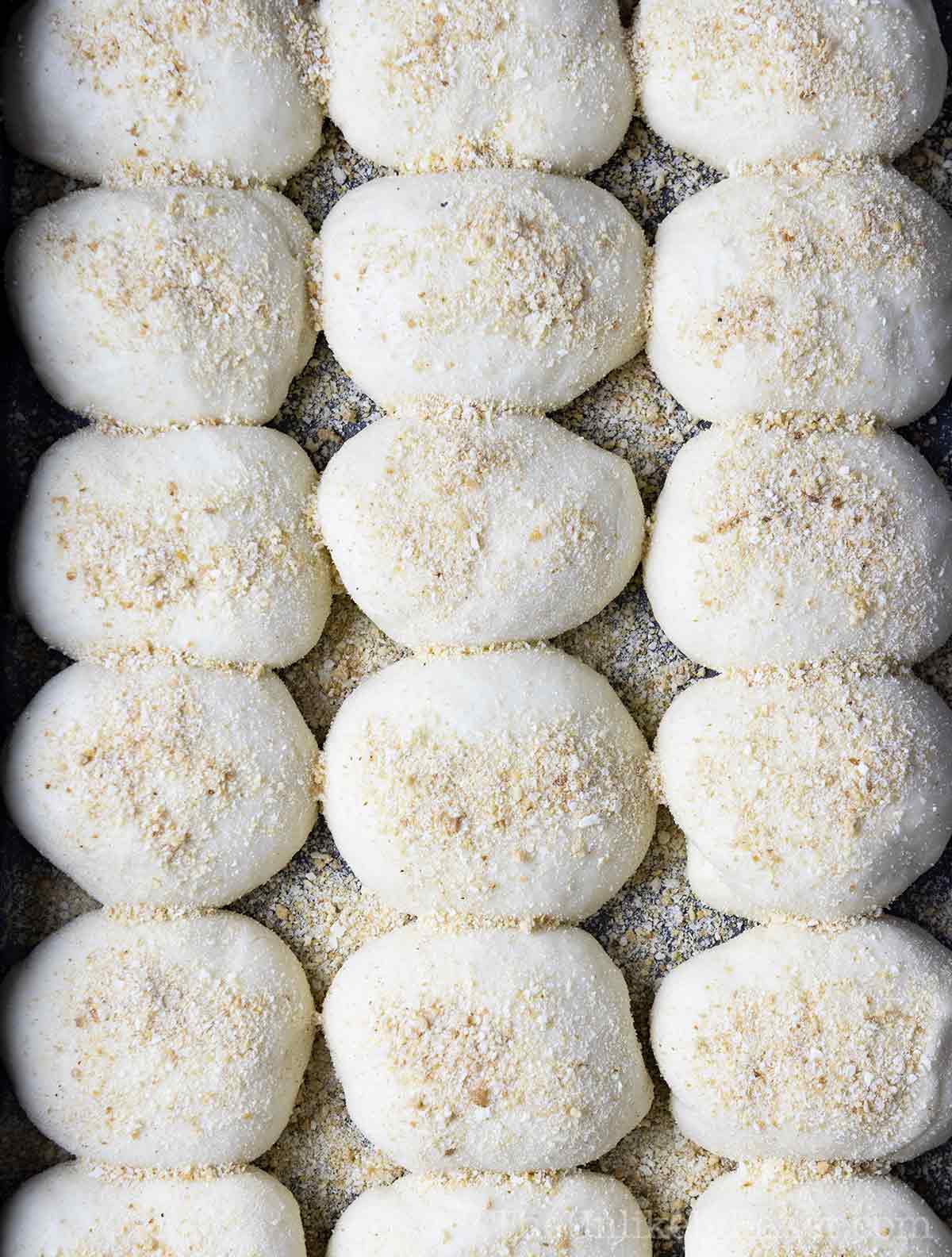
Secrets to making the best pandesal
Over the years, I’ve received plenty of questions from TUB readers about this pandesal recipe so I’ve decided to collate them all here.
Go through these tips and the FAQs that follow to learn how to make pandesal perfectly every time.
What makes pandesal soft and fluffy
There are several factors that affect the softness and chewiness of pandesal like yeast, moisture in the dough and proper kneading.
For soft pandesal:
- Make sure that your dough is not too dry. This pandesal dough is supposed to be on the stickier side; don’t be tempted to add too much flour or you will end up with dense bread.
- Proof your yeast. One of the reasons why I prefer using active dry yeast vs. instant yeast is I always need to proof it, i.e. ensure the yeast is still active, before adding it to my dough. If your yeast stays flat and doesn’t bubble after 10 minutes, it’s old and you need a fresh batch.
- Knead the dough enough. Kneading improves the structure of the dough, making it stretchy and pliable, and forming a structure that will trap air for a proper rise. Under-worked dough won’t have that and will result to dry, dense bread.
- Don’t knead the dough too much. Kneading the dough by hand rarely results to over kneading but is possible if you’re using your stand mixer. Once you get that perfectly elastic but still slightly sticky dough, stop.
How do I know if I’ve kneaded the dough enough
The most common way of testing if your dough has been kneaded enough is doing the “windowpane test”.
All this means is you pull off a small piece of dough and stretch it thin; if the gluten is well-developed, the dough will stretch into a paper-thin film without breaking. If it quickly breaks you need to keep kneading.
Here are more ways to tell when dough is kneaded enough.
I know some bakers like to make pandesal using their stand mixer (fitted with the dough hook attachment) and that’s perfectly fine.
I prefer to knead by hand because there’s less chance of over-kneading. And there’s really something very relaxing about it!
How to have evenly sized pandesal
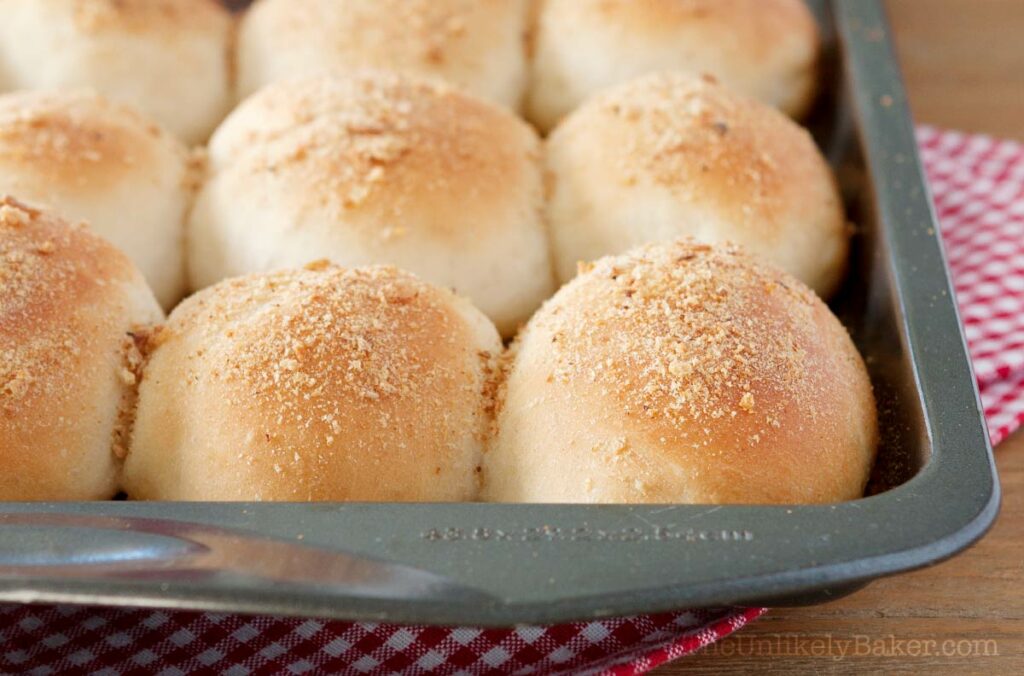
I get evenly sized pandesal by weighing the dough and dividing the weight by 36. I then ensure each piece of my pandesal is that exact weight (usually in grams).
To do this, you’ll need to invest in a kitchen scale. This is true for all baking, actually.
While you can get away with volume measurements with a lot of recipes, bread making is more exact so it’s always better to weigh your ingredients.
We bought our kitchen scale years ago for less than $20 and it’s one of the most used gadgets in our kitchen.
Tips for dealing with sticky dough
If your dough is sticky in the bowl as you’re stirring it, add flour a little at a time until it sticks together in a ball. Not too much though, or you’ll end up with very dense bread.
If it’s sticky while you’re kneading it, avoid the temptation to add even more flour. Instead, try kneading with slightly damp hands.
Tips when proofing yeast
Remember that yeast is a living thing and proofing is simply ensuring that your yeast is alive and active.
In this pandesal recipe, we use active dry yeast, which needs to be proofed. Note that rapid-rise yeast, instant yeast, or bread machine yeast don’t need to be, else they will lose their fast-rising ability.
Step 1: Mix yeast and warm water. The temperature of the water is important. It should feel warm but not hot. If you measure the temperature with a thermometer, it should be about 110F. Hotter than that and you’ll end up killing the yeast.
Step 2: Add sugar and stir. The yeast loves sugar and will gobble it up. If you watch the bowl or cup, you will actually see movement and this is the point when you will start to see bubbles and foam from the carbon dioxide that is forming.
Proofing usually takes about 10 minutes. If your mixture has no bubbles after this time, your yeast is old or stale. You’ll need to start with fresh yeast.
And unfortunately, there’s no way to revive old yeast.
Tips for making the dough rise
A lot of recipes say to allow the dough to rise until “double in size”.
Depending on the recipe, this can range from 30 minutes to 2 hours. Just check in at the halfway mark so you can get an indication of how much longer you have to go.
For me, what’s important is finding the proper place to leave my dough.
It’s cold here most of the year so leaving my bowl on our not-so-warm counter is not exactly ideal.
So what I like to do is turn my oven on to its lowest setting for a few minutes, then turn it off so that it’ll be about 90F when I’m ready to put my dough in to rise.
Just remember to remove the dough from the oven when you’re ready to preheat for baking.
And do you really need a damp cloth to cover your dough while rising? I do but it’s not necessary. Sometimes I use plastic wrap. And other bakers I know use pot lids.
The key is covering the bowl with something because doing so helps the dough retain moisture and prevents it from drying out.
Recipe FAQs
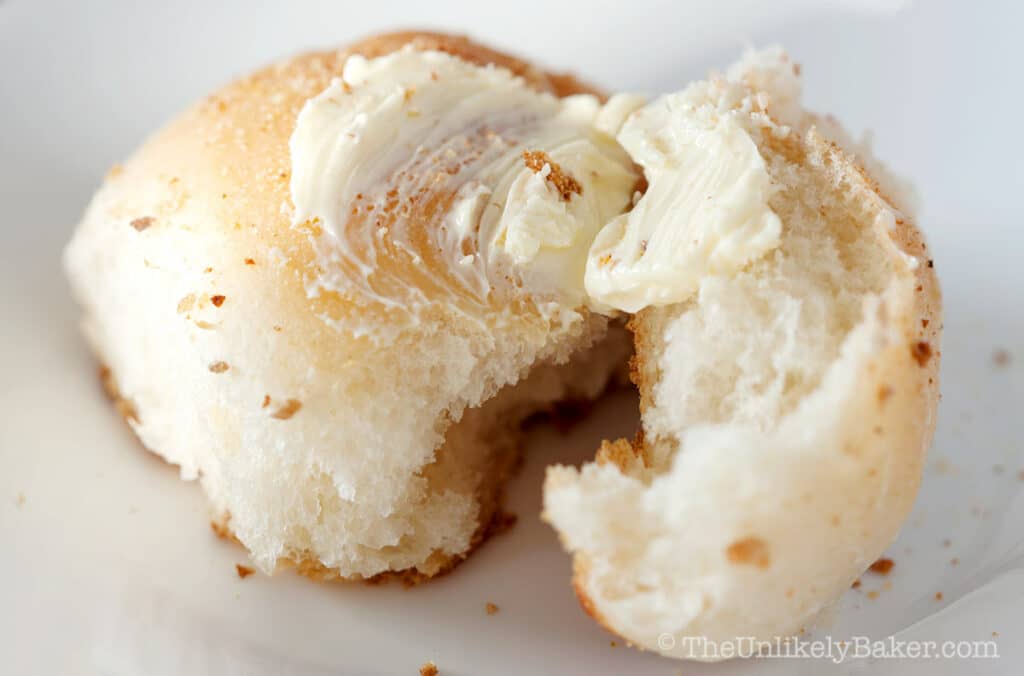
Your pandesal is hard and dense most likely because:
– The dough became too dry because of too much flour
– Yeast used is stale
– Dough was kneaded too much, or not enough
– Bread was over-baked
See the notes above for more information on how to make pandesal soft.
Pandesal bread is best eaten fresh out of the oven. Freshly baked, hot pandesal is so very good.
They will last for up to 2 days on your counter in an airtight container.
If you plan to keep them for longer, freezing is a better option. They can last at least a month.
Just place the pandesal in a freezer-safe container (we use a Ziploc bag) and put in the freezer. Then simply pop into your toaster to enjoy; no need to thaw.
Pandesal tends to get stale the longer it sits on the counter. I don’t recommend keeping them in the fridge either.
The best way to store them is to freeze them (see above). Once reheated, it’s like eating freshly-baked, soft pandesal every time!
If your pandesal does get stale, no worries. You can make Filipino bread pudding!
I’ve personally never used bread flour to bake bread. I always use all-purpose flour because that’s what I always have on hand. And I’ve had great success with it.
So if you don’t have bread flour, no worries. You can use all-purpose flour and make very tasty bread out of it.
I did read that the higher percentage of gluten in bread flour (somewhere between 11-14%) makes it ideal for bread because it makes the dough more elastic and easier to work, resulting to lighter textured breads.
So if you’re curious, you can substitute all-purpose flour for bread flour easily. It’s a 1:1 substitution. You can read all about it and the different kinds of flour here.
A quick note that not all all-purpose flours are the same though.
For example, the all-purpose flour we get here in Canada is higher in protein than the equivalent product in the US. So, when milled and used to bake bread, Canadian flour can “feel stronger and more elastic than an equivalent American flour, which will feel softer.”
Our little factoid of the day and something to keep in mind.
You can absolutely make pandesal without breadcrumbs. It’s the unique thing about this Filipino bread roll but if you’ve run out or simply don’t care for them, you can leave it out and still enjoy pandesal.
I always buy ready-made breadcrumbs but you can also make your own. Here’s a simple recipe for DIY breadcrumbs that you can check out.
Have more questions? Leave me a comment below.
Do you really want to know the secret in making the best pandesal ever though? Just enjoy the process! The kneading. The smell. The anticipation.
Being the unlikely baker that I am, I never imagined myself baking my own pandesal. Ever.
So every time I make it, and eat it, and realize how good it is, I’m always amazed at how far I’ve come. My spouse is astounded. I think my sister is just always in utter shock lol.
Making pandesal is special. It’s very personal to me, almost magical. Hope you enjoy it too!
If you want to try making homemade sandwich bread, here’s an easy and frugal sandwich bread recipe from Sarita over at An Off Grid Life.
Looking for more breakfast inspiration? Check out this delicious recipe collection of breakfast ideas.
Happy baking!
Did you make pandesal (Filipino bread rolls)? I’d love to hear from you in the comments section below.
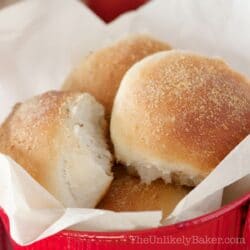
How to Make Soft Pandesal
Ingredients
Phase 1:
- 2 cups warm water around 110F
- 2 tsp active dry yeast
- 1 tsp granulated sugar
Phase 2:
- ⅔ cup granulated sugar
- ¼ cup canola oil
- 2 tsp salt
- 6 cups all purpose flour
Phase 3:
- 1 tbsp canola oil
Phase 4:
- ¼ cup bread crumbs
Instructions
Phase 1:
- In a medium sized bowl, stir 2 cups warm water, 2 teaspoons active dry yeast and 1 teaspoon sugar until dissolved. Set aside and let stand until bubbly (about 10 minutes).

Phase 2:
- In a large bowl, stir ⅔ cup sugar and ¼ cup oil until fully combined.

- Add 2 teaspoons salt, your yeast mixture and 1 cup flour. Stir until incorporated.

- Proceed to add the rest of your flour ½ cup at a time combining well after each addition.

- Once the dough starts pulling and sticking together in a ball, transfer it into a lightly floured surface and knead until smooth and elastic (8-10 minutes). When in doubt, knead some more.

Phase 3:
- Oil a large bowl with 1 tablespoon oil. Place your dough in the bowl and turn to ensure the whole dough is coated. Cover with a damp cloth or plastic wrap and allow to rise in a dry warm place (about 90F) until it doubles in size (about 2 hours).

- Once the dough is ready, turn the dough into a lightly floured surface and knead slightly. Weigh the dough and divide into 36 pieces.

- Shape each piece into an oval, like an egg, and place onto a lightly greased 9×13 inch baking pan (you would need two pans – 18 pieces per sheet). Make sure to keep about a quarter inch space around each piece to allow them to rise further.

- Cover each baking sheet with a damp cloth and allow to rise a second time (about an hour).

Phase 4:
- Preheat your oven to 375F. Sprinkle bread crumbs on top of the pandesal and bake until golden brown (15-20 minutes). Since you're using 2 baking sheets, you may want to rotate/switch the pans midway through.

Video
Notes
- This pandesal recipe requires 6 cups of flour. However, if you think you’ve added enough and your dough is getting too dry, you can stop. No need to add all 6 cups.
- This pandesal dough is meant to be on the stickier side though; so only go over the 6 cups of flour if your dough is very, very sticky and wet.
- For best results, weigh ingredients using a kitchen scale.
- When kneading the dough, you want a lightly floured surface. You can add a little more flour to make kneading more manageable but don’t add too much. Try kneading with damp hands instead.
- See the post for the complete step-by-step photos and a lot more tips for making perfect pandesal every time.
Nutrition
Nutritional information are estimates only.

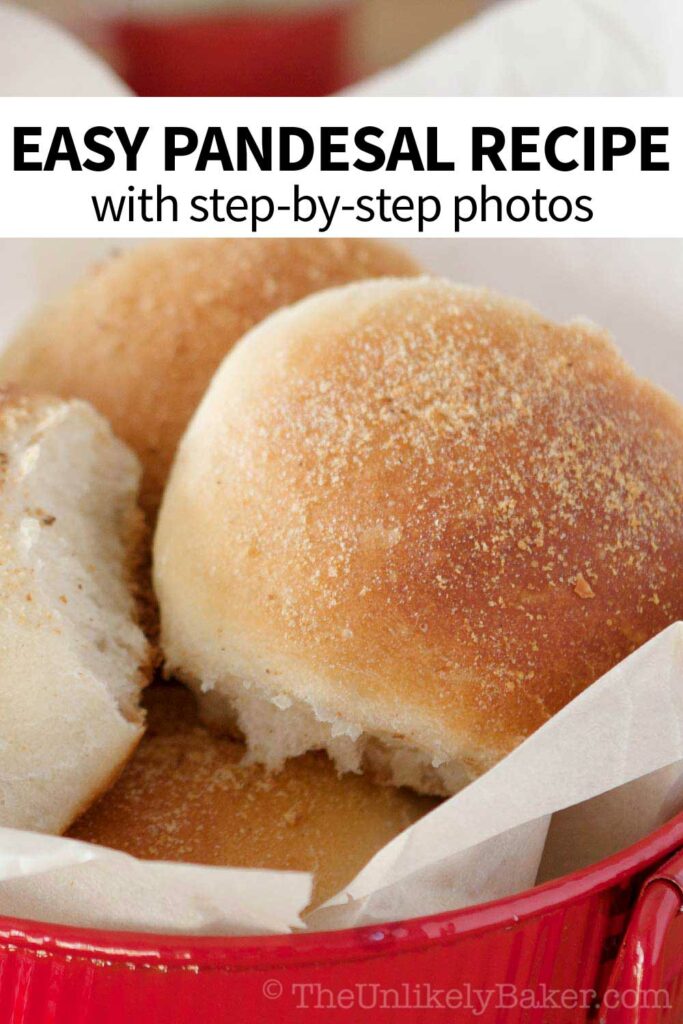
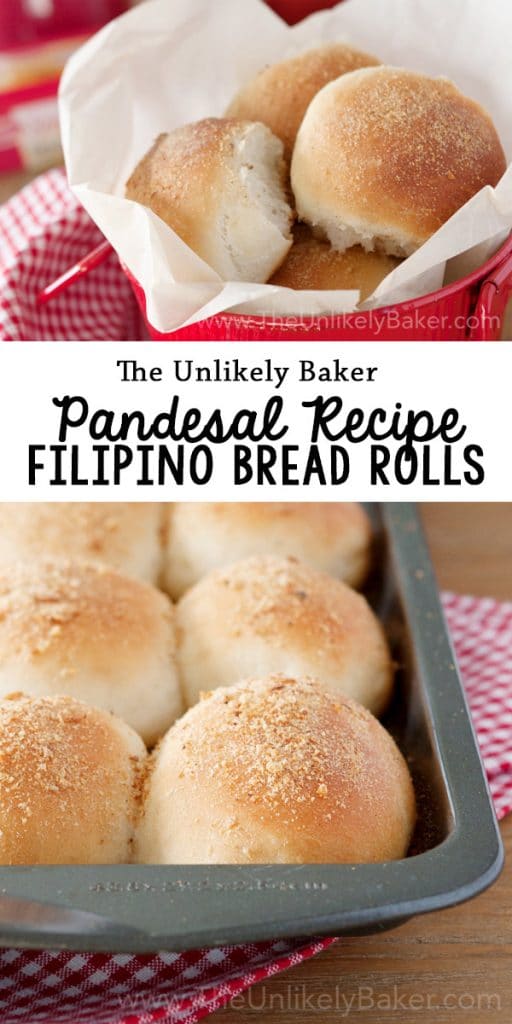
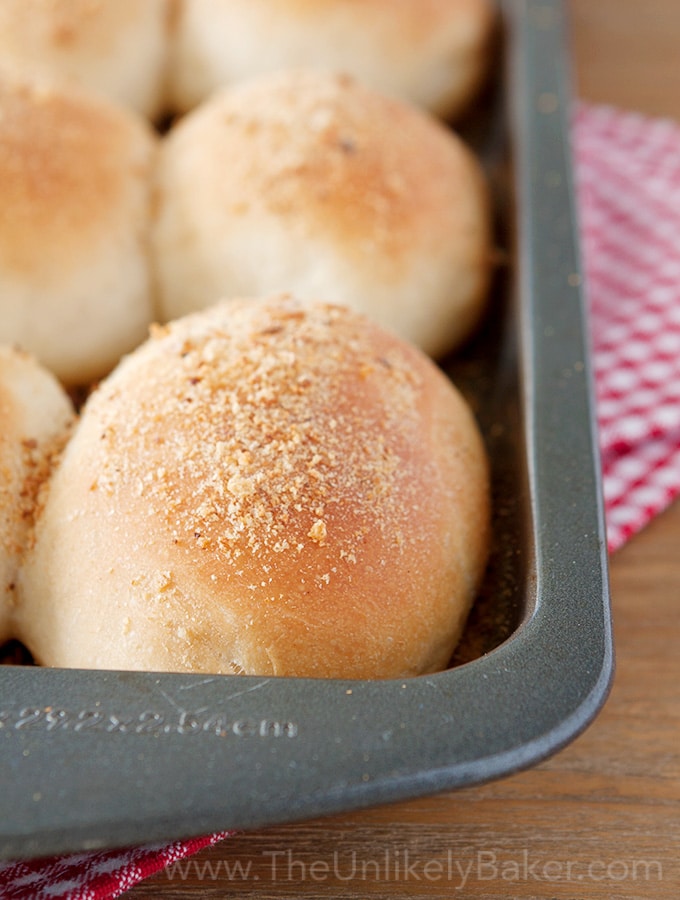
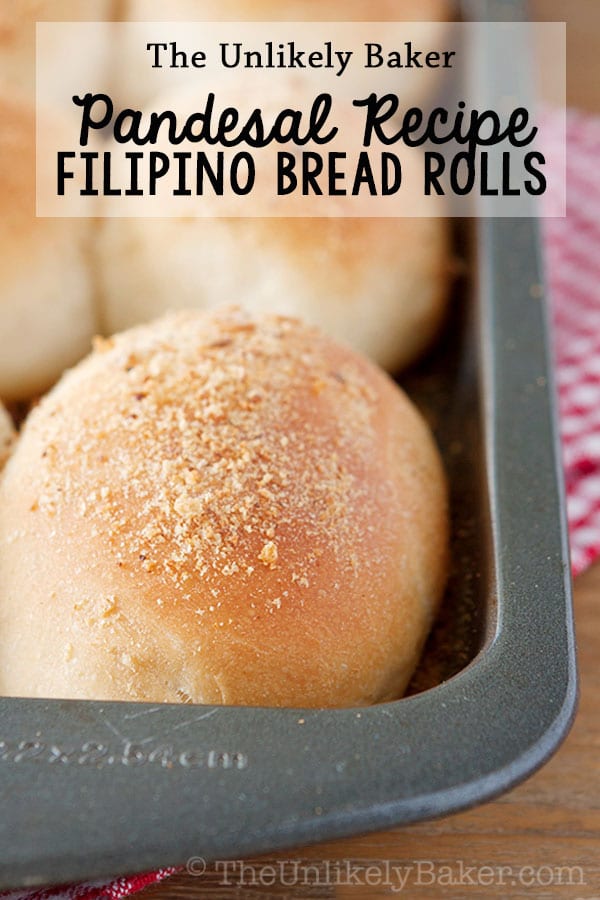

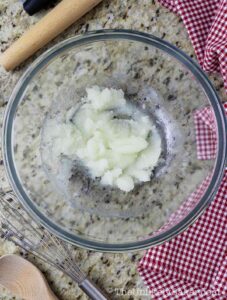
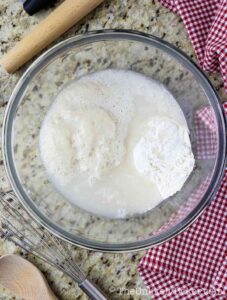
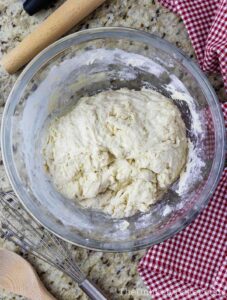
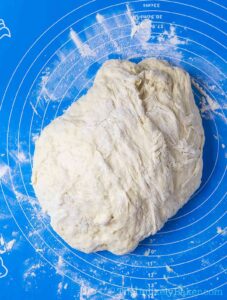
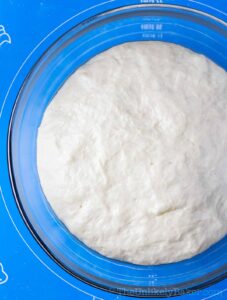
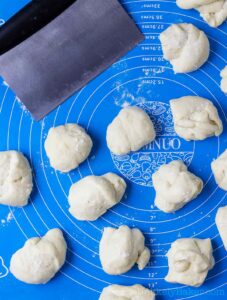
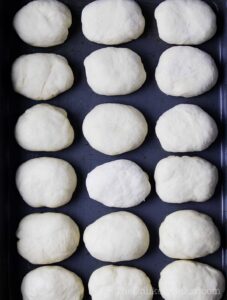

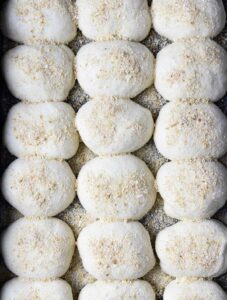
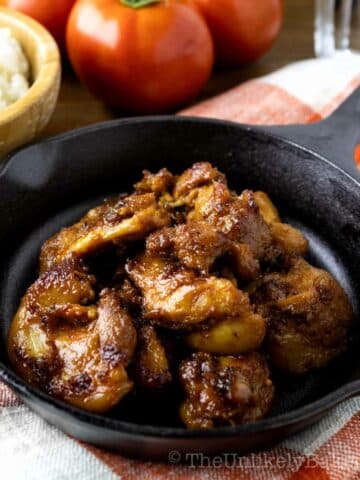
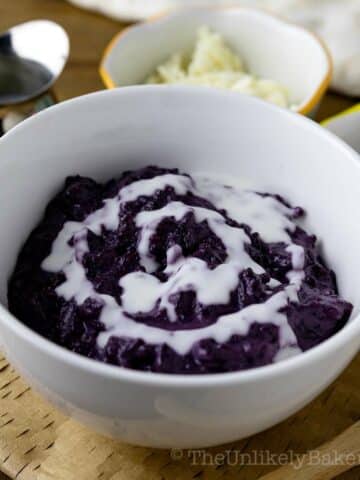
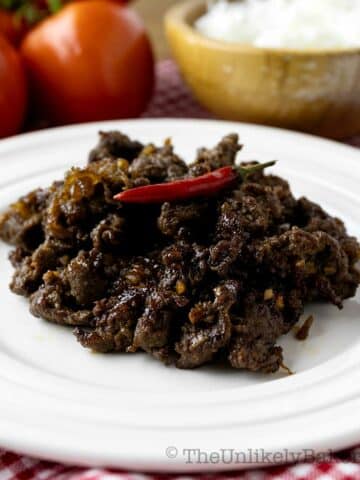

Precy Lee
I’ve tried several recipes for pandesal but yours is the only one that absolutely worked! The steps were so easy to follow and the ingredients were so minimal! Not
gonna lie I was doubtful how it would turn out not putting milk and egg in the mixture. But holy wow! It turned out PERFECT! Crunchy on the outside and a beautiful fluffy inside! I feel like a professional pandesal baker now! SO GOOD! Thank you so much for this!
Jolina
You are very welcome Precy! Happy baking! 🙂
Elaine
I am just learning how to bake and have only instant yeast. Do i still include the 2 cups warm water even if I don’t have to proof my yeast? I know my instant yeast is good, I just used it to bake milk bread today. I can’t wait to try your recipe. I’ve been searching for a pandesal recipe which doesn’t use eggs and milk. Thank you.
Jolina
Hi Elaine, unfortunately I haven’t tested this recipe using instant yeast. But yes, you’ll need to keep the water to maintain the ratio of ingredients. Would love to hear how it goes!
Arielle
Almost 2023 and just tried this recipe! Flavour is perfect and the house smells amazing hehe. My first time making any sort of bread and this recipe was very good to my beginner self!
I’m used to the kind they sell in local Filipino stores, which are much bigger than what I ended up with. Can you pls tell me what size they normally are? Mine came out to around 2.5″x3″
Also, your recipe calls for 16 per tray, but the photos are 18 per tray.. that was a little confusing
Jolina
Hi Arielle, I’m so happy to hear that! And thanks for pointing out that typo. I did use to make mine a little bit bigger, but now I stick to 18 pandesal per tray (36 total). I’ve already updated the post and the recipe. Do you have Manila Bakery or Valerio’s where you are? These are smaller than their pandesal.
Jaz
My parents love the smell of the Pandesal . Smells like Philippine bakery.
Thank you for sharing this recipe.
Jolina
It’s one of my favourite smells in the world! 🙂
Carlos
Hi Jolina. Sending a short note to say thank you for your detailed and easy pandesal recipe. I’m not an immediate baker but my pandesal came out perfect and exactly as I remember them. I agree with you about the magical smell that fills the home while pandesal is baking. Nothing quite like it. Wish you all the best. Continue sharing filipino culture and recipes. – Carlos
Jolina
Hi Carlos, thanks for your sweet note. The smell of fresh pandesal baking in the oven IS magical, isn’t it? 🙂 You’re welcome and hope you enjoy the other Filipino recipes on the blog.
Neil
Hi, the recipe makes alot of bread rolls. But will it be okay to store of the dough inside the fridge? How many days can i keep it inside the fridge?
Jolina
Hi Neil, I haven’t tried but you can definitely freeze the bread dough. Here’s a useful guide on how to do it: https://www.thespruceeats.com/how-to-freeze-yeast-bread-dough-427560
Marie
I’ve been trying to make pandesal for a while now but kept getting the same results- dense, heavy bread. I couldn’t figure out what I was doing wrong. This recipe made all the difference. Adding flour gradually was key. I did not use all 6 cups. I finally got soft and light bread. I will continue to practice until I master this. Thanks
Jolina
That’s awesome Marie! Enjoy 🙂
MichelleS
Is the dough really this sticky? Help!
Jolina
Hi Michelle, is the dough sticky as you’re stirring it? Try to add flour a little a time until it sticks together in a bowl. Not too much though, you’ll end up with very dense bread. Is it sticky while you’re kneading it? Instead of adding more flour to your surface, try kneading with slightly damp hands.
Boj
This is so relatable “One sniff of freshly baked pandesal and I’m back at my nanay’s dining table, eating pandesal filled with Lily’s Peanut Butter that she prepared for me after school.” Will try your recipe later!
Jolina
🙂 Enjoy!
Jenny Natalicio
This is my first time to try it. It came out great! So fluffy. I just need to figure out the size but I read how you weigh it in another comment so I will try that next time. These taste so yummy!!!
Jolina
Happy to hear that Jenny! 🙂
Melanie
Hi there! I made this and was really tasty. However, the bottom ended up being crispy almost burnt. How do I avoid that for next time? Thanks!
Jolina
Hi Melanie! There are several reasons why this can happen sometimes e.g. oven doesn’t heat evenly, has hot spots, baking pan too thin, dark pan vs shiny aluminum pan etc. First thing I’d do is invest in an oven thermometer so you can be sure you’re baking at the right temp. Are you using a dark non-stick pan? Next time try to reduce the temperature by 25 degrees, see if that helps.
Erika
Hello! I’ve been using your recipe for pandesal quite a few times now. My family gets me to make a batch of pandesal at least once every week/every other week hehe.
I used a scale to measure almost all my ingredients/dough for the first time today. The size of my bread always comes out different lol so maybe this will help make it uniform. For 16 pandesal I had apprx. 40g of dough per piece… with the last 4 pieces about 45g
I was wondering, at what weight do you have your shaped pandesal at?
Jolina
Hi Erika! I don’t remember but I’m very exact when I weigh them. So if I weigh my dough and divide that by 16 and it says 32.56, for example, I will make sure each one is 32.56 🙂 Hope this helps!
Erika
♀️ It was that simple pala… Hehe. I will try it next time! Thank you.
Forgot to rate your recipe in my previous comment 🙂
Jolina
Thank you! Happy baking 🙂
Ashley
Easy recipe to follow and make. I’ll definitely do it again One thing I’m wondering is how do you prevent the towel from sticking to the dough during the second proof?
Jolina
Hi Ashley. I always use a damp tea towel. What kind of cloth do you use? I found this great article with more tips: https://www.thekitchn.com/how-to-keep-rising-bread-dough-111009 Hope it helps!
Noreen
You can also use cling wrap or a clean plastic bag/freezer bag (cut open so it’s like a sheet of plastic) to cover your dough 🙂 this is what we use at pastry school and it works well!
LV
What kind of bread crumbs do you use?
Jolina
Hi LV. I use plain bread crumbs. This is the exact brand I use (it’s an affiliate link) – https://www.amazon.com/gp/product/B00G3JCKGE/ref=as_li_tl?ie=UTF8&camp=1789&creative=9325&creativeASIN=B00G3JCKGE&linkCode=as2&tag=theunlbak-20&linkId=418a5ad0e12c8f85f94bd413b822832c
Rowena
Can i use shorthening or lard with this? If so what are the measurements? Tia.
Jolina
Hi Rowena. I haven’t made this recipe with shortening or lard. Always just oil.
Divya
Hi Jolina! If i used melted butter instead of oil would it make a difference. or vegetable oil instead of canola?
Jolina
Hi Divya! I always use oil so can’t say if butter will work. You can use canola or vegetable oil.
Sid
Thanks for this recipe! This is my first try to make a bread and I made half batch but without the breadcrumbs as I run out of it but still it was a success. I spread butter on top instead before the baking ends and my kids love it (taste similar to bonete bread of Cavite if you’re familiar). I’m so happy with the outcome. Will redo again with the breadcrumbs to achieve the pandesal texture. Thanks again!
Jolina
That’s fabulous Sid! I don’t remember if I’ve ever tasted bonete bread but you’ve given me an idea for my next batch of pandesal 🙂